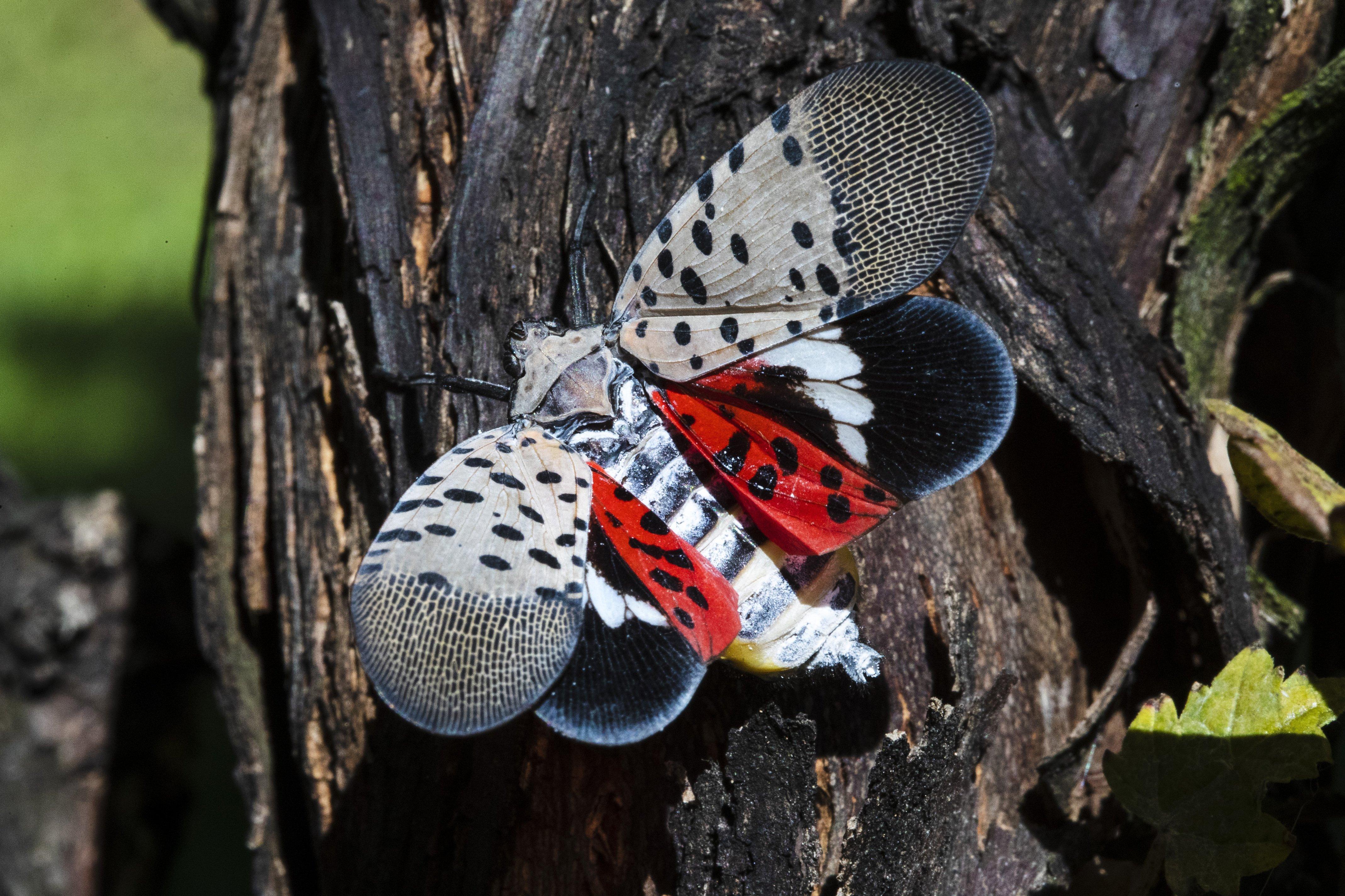
“There are times when just watching them go into the bottle is very calming and rhythmic,” she added. Volker, who regularly adds an ASMR tag to her videos, popularized the “bottle method” of capturing spotted lanternflies, using the pressure vacuum of a squeezed empty water bottle to suck up the pests. The meaning of LANTERN FLY is any of several large brightly marked homopterous insects (family Fulgoridae) having the front of the head prolonged into a. You can also put sticky tape on tree trunks, rocks and fence posts where the bugs like to lay eggs (but be careful not to trap other small.

“There are these people who just find it oddly satisfying, and I get it,” said Liv Volker, who is known as the spotted-lantern fly’s first influencer and has gotten over 7 million likes on her TikTok account that she dedicated to killing the insects. Lanternflies are lightning fast on their wings. A larger concern is that through the damage from feeding on the sap of your trees, Spotted Lanternfly can weaken your trees so dramatically, and make them susceptible to other pests and diseases.But what started out as an informative social media campaign called “See it? Squish it!” - carried out by state and local parks departments to advocate for everyday people to take part in eradicating the plant-hopping insect - has begun to collide with other internet phenomena, most notably ASMR - a brain-tingling sensation induced in some people by certain videos and pieces of audio, which has generated its own internet subgenre of creators. The Black Sooty also stains many surfaces including patios, roof and siding, and concrete walkways just to name a few. A number of insects such as bees, wasps, hornets, even ants are attracted to this material making matters even worse. As Spotted Lanternfly continues to feed, they secrete an extremely sticky substance called honeydew covering the leaves, limbs, trunks and surrounding property which can lead to the growth of black sooty mold. As they feed, trees can be seen weeping sap from the wounds caused by these insects. These insects prefer to feed on species of trees with heavy sap flow such as Ailanthus, Maple, Birch and Willow, but there have been reports of additional feeding on Apple, Cherry, Beech, Oak, Pine, Plum, Poplar, Sycamore, and Walnut.

Smaller trees respond very well to the systemic applications, but when dealing with larger trees, a trunk injected application is required to give the tree its proper dose.įrom the immature instar stages to adulthood, the Spotted Lanternfly feeds on sap from the leaves, stems, and trunks of many plants. Our program includes either a trunk Injection or bark spray method, using a pesticide containing the active ingredient Dinotefuran, which rapidly moves through the entire tree and quickly begins to kill these actively feeding Spotted Lanternfly and protect your trees from further damage. In the USA, spotted lanternfly is an invasive species that could be very devastating to some New Jersey crops and hardwood trees. With the correct choice of products and precise dosing, these pests will begin to die off as they continue to feed on the sap containing the pesticide after the application has been made. It is not uncommon to observe swarms of Spotted Lanternfly on your most valuable trees on the property, which is why systemic products that translocate through the entire tree and its branches have shown to provide fastest results available.

Together, we can stop the spread of this. Spotted Lanternfly have a very big appetite and feeds on the tree’s sap. Spotted lanternfly are hitchhikers that can spread long distances through the movement of infested material or items containing egg masses. The spotted lanternfly is an invasive insect that is putting American agriculture and forests at risk. The egg masses can be easily moved by humans. The Spotted Lanternfly (Lycorma delicatula) is native to China and was first detected in Pennsylvania in September 2014. They can feed directly on fruits, such as grapes damaging them. Both adults and nymphs have piercing-sucking mouthparts that they use to suck sap from plants. Spotted lanternfly feed on a wide variety of plants, but prefer tree of heaven, Alianthus altissima. After testing different products trying to find the best treatment to offer our customers, we are happy to be able to provide an application that gives results in as little as 24 Hours. Need to Know Spotted lanternfly are an invasive insect first detected in Pennsylvania in 2014.


 0 kommentar(er)
0 kommentar(er)
